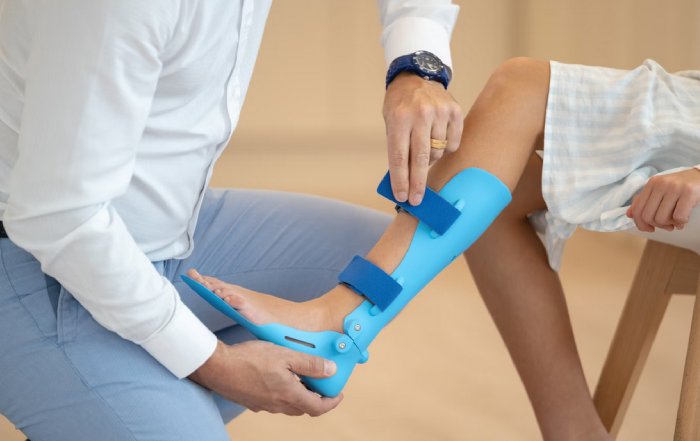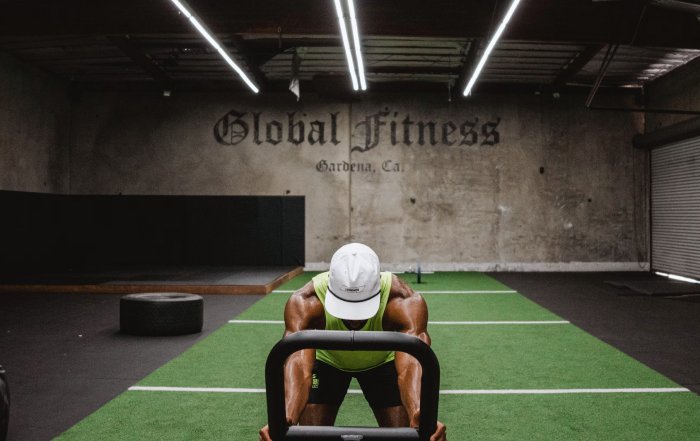The mix of technology and human performance has entered a revolutionary phase, transforming how athletes, fitness enthusiasts, and even workplace professionals manage recovery and prevent injuries. What was once confined to the expertise of physiotherapists and sports medicine specialists is now enhanced by data-driven innovation, smart wearables, and artificial intelligence. These advancements are redefining the concept of preventive health, placing recovery at the core of sustainable performance and longevity.
On FitPulseNews.com, where wellness meets science and innovation, this shift signifies more than just the emergence of new gadgets—it represents a deeper evolution in how health, technology, and human adaptability align to optimize physical resilience. Across professional sports, medical research, and global fitness industries, recovery tools have become central to maintaining strength, reducing injury risk, and extending peak performance in a world that increasingly values longevity over short-term achievement.
Learn more about the broader relationship between health and innovation on FitPulseNews Health and FitPulseNews Fitness.
The Convergence of Sports Science and Technology
Modern recovery strategies no longer rely solely on traditional approaches such as rest, massage, or stretching. Instead, they are deeply influenced by scientific precision and technological integration. The fusion of sports science and biomechanical data enables real-time monitoring of the body’s physiological responses during training and recovery phases. Through platforms like Catapult Sports, WHOOP, and Oura, athletes and coaches can interpret data related to heart rate variability (HRV), sleep cycles, muscle strain, and caloric output, leading to smarter decisions and reduced overtraining risks.
The ability to access continuous biometric feedback has altered the training landscape across global sporting organizations and fitness centers. AI-powered predictive analytics now assess the likelihood of injuries before they occur by analyzing micro-patterns in muscle fatigue, body temperature, or hydration levels. This anticipatory capability is not limited to elite sports; even recreational athletes and office workers benefit from devices like Therabody RecoveryAir, Hyperice Hypervolt, and Normatec compression systems, which are engineered to accelerate tissue repair and promote circulation.
Explore more about how technology influences physical performance in FitPulseNews Technology and FitPulseNews Sports.
Wearables and the Rise of Real-Time Biometrics
Wearable technology has become the heartbeat of injury prevention. Devices like the Apple Watch Ultra, Garmin Fenix 7, and Polar Vantage V3 integrate multi-sensor arrays capable of measuring oxygen saturation, muscle load, and body temperature fluctuations. Such insights guide users toward personalized recovery routines and optimal training intensity.
The global market for wearables has expanded beyond performance tracking to serve as a proactive health safeguard. Companies like WHOOP and Fitbit are introducing advanced AI-driven algorithms capable of detecting early signs of overexertion or systemic inflammation. These insights inform users when to scale back activity, hydrate more effectively, or adjust sleep cycles to restore equilibrium.
Beyond individuals, team-based applications now allow coaches to oversee group recovery trends. Professional sports organizations such as Manchester City and LA Lakers use integrated systems combining data analytics and recovery tech to optimize athlete workload and prevent cumulative fatigue. Such technologies signify a shift from reactive to predictive health management—a hallmark of 2025’s approach to injury prevention.
Learn more about the business of sports innovation on FitPulseNews Business.
Smart Recovery Equipment and Connected Ecosystems
The growing sophistication of recovery tools has transformed the home and gym environment into connected ecosystems of wellness. Devices like Normatec Go, Therabody Wave Roller, and Compex muscle stimulators sync via Bluetooth to mobile platforms that track performance metrics, recovery duration, and muscle response efficiency. These tools not only enhance the physical recovery process but also provide users with data visualizations that reinforce awareness of body mechanics and stress responses.
Infrared therapy mats, cryotherapy pods, and percussive massage guns represent a growing industry now estimated to exceed $10 billion globally by 2025. The integration of IoT (Internet of Things) within these systems has led to smarter feedback loops. For instance, Hyperice devices connect directly to fitness apps, offering guided recovery programs tailored to each user’s biometric profile.
Such convergence between technology and recovery has also influenced the hospitality and wellness industry, as elite gyms and wellness resorts incorporate connected recovery zones equipped with AI-driven diagnostics. These facilities mirror medical-grade precision but are designed for accessibility and convenience, bridging the gap between clinical science and consumer wellness.
Discover more about how global wellness culture is evolving at FitPulseNews Wellness.
The Integration of Artificial Intelligence in Injury Prevention
Artificial intelligence has redefined the parameters of prevention. Through machine learning models, platforms such as Kitman Labs and Zebra MotionWorks analyze vast datasets from multiple athletes, identifying trends and deviations that could signal the onset of potential injuries. AI interprets these data points faster than human analysts, providing actionable insights that inform individualized training regimens.
The next stage in injury prevention lies in adaptive recovery platforms, where AI continuously recalibrates a user’s recovery plan based on new physiological inputs. These adaptive models adjust recommended activities, rest cycles, and even nutritional guidelines in real time. In 2025, this concept has found strong adoption not only in elite sports but also in workplace health management programs, where employee well-being is monitored through corporate fitness integrations.
Global tech leaders such as Google Health, Microsoft Cloud for Healthcare, and IBM Watson Health are also extending AI applications toward preventive care analytics, merging fitness data with clinical research. This convergence contributes to a broader public health mission: reducing the burden of musculoskeletal injuries and improving the quality of life through intelligent, continuous monitoring.
Learn more about AI innovation in the health space at FitPulseNews Innovation.
Recovery Meets Nutrition and Cellular Health
Recovery is no longer viewed solely as physical rest; it is understood as a complex biological process influenced by nutrition, cellular repair, and metabolic recovery cycles. Tech-enabled platforms like InsideTracker and NutriSense combine biomarker tracking with nutritional intelligence to provide actionable dietary advice. Such platforms integrate with wearables to create comprehensive feedback systems linking what one eats to how one performs and recovers.
Scientific advancements in nutrigenomics are shaping individualized approaches to recovery. By understanding how genes interact with nutrients, athletes can personalize their diets to support faster muscle regeneration, reduce inflammation, and optimize energy efficiency. This personalized nutrition model is bolstered by AI-powered diet tracking apps and smart kitchen devices that align meal preparation with metabolic data.
Organizations such as the World Health Organization (WHO) and Harvard Medical School have emphasized the role of recovery nutrition in reducing chronic injury risk, especially in high-intensity training environments. As the global wellness industry continues to expand, the merging of data-driven nutrition with recovery technology underscores the holistic nature of modern injury prevention.
Read more about performance nutrition and recovery synergy on FitPulseNews Nutrition.
The Impact on Workplace and Corporate Wellness
The principles of recovery and injury prevention are extending beyond gyms and athletic fields into the modern workplace. As hybrid work environments proliferate, companies are increasingly adopting digital health platforms that integrate ergonomic monitoring, posture analytics, and stress detection to protect employee health. Wearable sensors and AI-driven wellness apps identify early signs of repetitive strain or stress-related injuries, promoting timely interventions.
Corporate wellness programs by organizations like Google, Salesforce, and Deloitte now include access to smart recovery devices and virtual physiotherapy sessions. This trend reflects an acknowledgment that physical well-being directly correlates with productivity and employee engagement. In regions like North America and Europe, where workplace burnout has become a growing concern, preventive recovery technologies are being used as strategic tools for workforce sustainability.
By merging fitness and technology into occupational health, corporations are not merely reducing sick leave—they are fostering resilience, morale, and performance. The next generation of employees expects this integration, making recovery technology an essential feature of modern business culture.
Explore the intersection of business and fitness at FitPulseNews Business and FitPulseNews Jobs.
The Global Expansion of Recovery Technology
From the United States and Europe to Asia-Pacific, recovery technology has become a major growth driver in the health-tech economy. Startups in Singapore, Sweden, and Japan are developing compact, AI-powered recovery devices suitable for urban living spaces, while the United Kingdom and Germany are leading research on data security and ethical AI use in biometric monitoring.
The Asia-Pacific region is witnessing rapid adoption due to the increasing popularity of connected gyms and at-home wellness devices. In China and South Korea, major fitness brands are merging entertainment with health through virtual coaching and gamified recovery routines. Meanwhile, in Australia and Canada, rehabilitation clinics are integrating robotic exoskeletons and neuromuscular stimulation technologies into patient care.
International partnerships between healthcare providers and tech firms—such as Samsung Health’s collaboration with Mayo Clinic—are bridging gaps in preventive care and recovery science. This global convergence is not merely a market trend; it represents a shift toward democratizing access to recovery tools once reserved for elite athletes.
For insights into international trends and sports innovation, visit FitPulseNews World.
Sustainability and the Future of Recovery Tech
As technology advances, the sustainability of manufacturing and device usage has come into sharper focus. Companies like Hyperice and Therabody are now investing in recyclable materials, modular repair systems, and eco-friendly packaging. Moreover, the energy efficiency of electronic recovery tools is improving, aligning the industry with broader global sustainability goals.
The concept of a “circular fitness economy” is emerging, emphasizing product longevity, software updates over hardware replacement, and community-based recovery hubs. These initiatives reflect a growing consumer demand for responsible innovation—where technology supports both personal health and environmental integrity.
The integration of sustainability principles within the recovery technology sector resonates with the mission of FitPulseNews, which continuously explores the balance between human performance and environmental awareness. Learn more about sustainability trends at FitPulseNews Sustainability and FitPulseNews Environment.
The Next Frontier of Recovery
By 2030, the future of injury prevention will likely transcend individual devices and evolve into a fully interconnected digital ecosystem. Bio-sensing fabrics, AI-driven exosuits, and nanotechnology-based muscle regeneration tools are under development, promising a seamless integration of technology with human biology. Researchers are exploring neurofeedback interfaces that could anticipate muscle strain through brain-signal analysis, allowing preventive measures before physical symptoms manifest.
In professional sports, governing bodies such as FIFA, NBA, and IOC are investing in cross-disciplinary collaborations to improve athlete health protocols using AI and robotics. In healthcare, predictive diagnostics are expected to merge with rehabilitation robotics to form an unbroken continuum between injury detection, treatment, and recovery.
This technological evolution also carries a profound philosophical shift. Recovery is no longer reactive—it is proactive, intelligent, and sustainable. As FitPulseNews.com continues to explore the fusion of technology, health, and human potential, it becomes clear that injury prevention in 2025 is not about avoiding strain but mastering adaptation.
For more in-depth analysis of fitness innovation, explore FitPulseNews Fitness, FitPulseNews Health, and FitPulseNews Innovation.
Evolution of Recovery Technology
From Traditional Methods to AI-Powered Regeneration
Traditional Recovery
Recovery relied on rest, massage, and stretching with limited data-driven insights. Sports medicine specialists guided rehabilitation through manual assessment.
Wearable Revolution
WHOOP, Oura, and fitness trackers introduced continuous biometric monitoring. Athletes gained access to HRV, sleep quality, and strain metrics for personalized recovery.
Smart Recovery Devices
Therabody, Hyperice, and Normatec launched connected compression and percussive therapy systems. Market reached $8.9B with IoT integration enabling real-time feedback.
AI Predictive Analytics
Kitman Labs and Catapult Sports deployed machine learning models to predict injury risk before symptoms appear. Corporate wellness programs adopted preventive monitoring.
Neurotechnology & VR
Halo Neuroscience and Meta Quest 3 enabled neural priming and immersive rehabilitation. Adaptive recovery platforms recalibrate plans in real-time using continuous biometric inputs.
Biological Regeneration
Nanotechnology and biosuits accelerate cellular healing. AI-driven microdosing implants deliver personalized nutrients based on real-time blood chemistry for muscle regeneration.
Global Adoption, Brand Leadership, and the Business of Smart Recovery
The Competitive Landscape of Recovery Technology
In 2025, the recovery technology sector has evolved into one of the fastest-growing verticals within the broader fitness and wellness market. The competition among leading brands has spurred rapid innovation, with Therabody, Hyperice, Normatec, WHOOP, and Oura dominating the conversation. Each company has distinguished itself through its technological approach, brand narrative, and target audience, yet they share a unified goal: to redefine how the body heals and adapts after physical exertion.
Therabody, founded by Dr. Jason Wersland, continues to set benchmarks in percussive therapy innovation. The brand’s Theragun PRO line, coupled with the Therabody SmartGoggles, demonstrates a holistic recovery strategy combining mechanical muscle relief with neuromuscular relaxation techniques. Meanwhile, Hyperice, now a global partner of the NBA, NFL, and FIFA, has advanced the integration of pneumatic compression and heat therapy with connected device ecosystems that adapt based on biometric data collected from users’ wearables.
WHOOP, on the other hand, has shifted from a simple fitness tracker to a comprehensive performance optimization platform. The WHOOP 4.0 band provides continuous physiological monitoring and contextualizes strain, sleep, and recovery scores into actionable coaching insights. By offering subscription-based data analytics, WHOOP has redefined value in the wellness market—not by selling devices, but by monetizing human performance intelligence.
Similarly, Oura Ring Gen 4 has achieved widespread adoption for its precise measurement of heart rate variability, temperature trends, and recovery readiness scores. These tools empower both athletes and everyday users to understand recovery as a measurable, dynamic process that can be fine-tuned through behavior and environment.
Learn more about leading fitness technology innovations on FitPulseNews Technology and explore global sports developments at FitPulseNews Sports.
AI and Machine Learning: The Backbone of Predictive Recovery
Behind the sleek exterior of modern recovery devices lies a sophisticated architecture of artificial intelligence and machine learning algorithms. Predictive modeling is central to understanding how the body responds to repetitive stress and fatigue. AI platforms analyze data streams from wearables, video motion capture, and environmental sensors to build individual performance profiles that evolve over time.
Companies such as Kitman Labs, Catapult Sports, and Kinduct have specialized in aggregating large-scale athlete data across entire teams and leagues. Their predictive systems can flag increased injury probabilities before an incident occurs by detecting minute changes in joint loading, gait asymmetry, or muscle activation timing. These insights allow coaches and medical teams to intervene early—adjusting training intensity, scheduling recovery days, or prescribing targeted physiotherapy sessions.
AI’s potential extends beyond elite sports into general fitness and rehabilitation. Startups like Valor Performance and Elite HRV are pioneering cognitive and emotional recovery analytics, where machine learning evaluates mental fatigue and stress biomarkers alongside physical metrics. The resulting holistic models represent the future of total wellness—where mental resilience and physical recovery are treated as interdependent variables within a single health equation.
To understand how artificial intelligence shapes innovation and global industries, visit FitPulseNews Innovation and FitPulseNews Business.
Neurotechnology and Recovery: Rewiring Human Potential
Among the most fascinating frontiers in recovery science is neurotechnology—the interface between the human nervous system and digital feedback systems. This area has witnessed explosive growth as research into neuroplasticity and motor learning expands. Devices using transcranial direct current stimulation (tDCS) and electromyography (EMG) are being deployed to accelerate muscle coordination recovery, especially following injury or surgery.
NeuroSync and Halo Neuroscience, two pioneers in this space, have developed neural priming devices that stimulate brain areas responsible for movement control. By pairing these with physical training, users experience enhanced neuromuscular adaptation, improved reaction times, and faster rehabilitation outcomes. Meanwhile, Rehab Robotics and Ekso Bionics are pushing boundaries with robotic exoskeletons designed for gait retraining in both clinical and athletic environments.
The convergence of neuroscience and recovery technology underscores a broader human potential narrative. Recovery is not merely about healing—it’s about recalibration. Through neurofeedback, real-time brain imaging, and adaptive bio-signaling, recovery tools in 2025 are teaching the human body to re-learn efficiency, coordination, and endurance faster than ever before.
For deeper insights into science-driven performance breakthroughs, visit FitPulseNews Health.
Regional Perspectives: Adoption Across Continents
The spread of tech-fueled recovery tools reflects both cultural attitudes toward health and regional economic development. In North America, consumer awareness of recovery technology is driven by the booming fitness culture and corporate wellness programs. Major U.S. sports franchises, university athletic departments, and private healthcare networks have all integrated recovery analytics into their performance models. The country’s advanced digital infrastructure enables seamless data connectivity between wearable devices, cloud platforms, and medical providers.
In Europe, particularly in Germany, Sweden, and Denmark, the emphasis lies on sustainable wellness and ergonomic design. European startups are leading the way in environmentally responsible recovery products made from recycled materials and powered by renewable energy sources. This reflects a deep societal commitment to balancing technological advancement with ecological mindfulness—a philosophy that mirrors the European Union’s digital sustainability policies.
Across Asia-Pacific, the expansion of connected gyms and home-based wellness systems has accelerated adoption. In Japan, recovery technology aligns with the nation’s aging population, offering mobility support and joint-care solutions that blend robotics and AI. Singapore and South Korea have emerged as innovation hubs for smart healthcare startups, integrating digital recovery solutions into national health strategies. Meanwhile, in China, the fusion of gamified fitness and social health tracking has made recovery technology both entertaining and socially rewarding.
These regional variations highlight that while the tools may be global, their application remains deeply local. Cultural values, healthcare infrastructure, and lifestyle norms all shape how recovery technology is received, customized, and scaled.
Explore more about worldwide fitness and wellness trends on FitPulseNews World.
Market Growth and Economic Outlook
The financial trajectory of the recovery technology sector has been extraordinary. According to global market analyses, the sports recovery technology market—valued at approximately $8.9 billion in 2023—is projected to exceed $17 billion by 2030, reflecting a compound annual growth rate of over 10%. This expansion is driven by increasing health consciousness, post-pandemic rehabilitation awareness, and the rise of hybrid fitness lifestyles blending digital and physical engagement.
Investment in health-tech startups specializing in recovery has surged. Venture capital firms like Andreessen Horowitz, Sequoia Capital, and SoftBank Vision Fund are actively financing companies that develop AI-powered health diagnostics and connected recovery ecosystems. The shift toward subscription-based platforms, rather than one-time hardware sales, ensures continuous revenue streams and customer engagement through data services and software updates.
Corporate collaborations are also fueling the sector. Partnerships between Nike and Apple, or Garmin and Fitbod, have blurred the line between hardware and digital ecosystems, emphasizing seamless integration. As these collaborations expand, the recovery technology market is no longer a niche but a cornerstone of the global wellness economy.
Learn more about the intersection of business and innovation at FitPulseNews Business.
Ethical Challenges in Data and Privacy
As with any data-driven revolution, the proliferation of connected recovery tools introduces complex ethical and privacy concerns. The collection of biometric and behavioral data, while essential for personalization, raises questions about ownership, consent, and potential misuse. Governments in the European Union, under the GDPR framework, have implemented stricter regulations ensuring that users retain control over their physiological data. In contrast, regulatory frameworks in other regions are still catching up, leading to inconsistencies in how recovery-related data is stored and analyzed.
Companies are responding by developing privacy-first architectures, incorporating end-to-end encryption and anonymized cloud storage solutions. However, the rise of AI-based predictive health modeling introduces new dilemmas—particularly around algorithmic bias, data accuracy, and the psychological implications of predicting injury risk. There are growing debates about whether athletes should be informed of predictive injury likelihoods that may influence career decisions or contract negotiations.
To maintain consumer trust, transparency has become a defining factor. Brands like WHOOP and Oura now offer full data export and deletion capabilities, while professional leagues have established guidelines on how player biometrics can be shared or monetized. Ethical innovation is now as critical to brand reputation as technical performance itself.
For global discussions on tech ethics and data policy, visit FitPulseNews News and FitPulseNews Technology.
Recovery and the Metaverse: A Digital Training Revolution
An emerging development reshaping recovery culture is the integration of virtual and augmented reality. The Metaverse—once confined to gaming and entertainment—is now being adopted as a tool for immersive physiotherapy and guided rehabilitation. Using VR headsets like Meta Quest 3 and HTC Vive Pro, users can participate in simulated recovery sessions where therapists and coaches appear as digital avatars guiding personalized routines.
These virtual experiences combine motion tracking with biomechanical data to ensure that each movement aligns with optimal joint angles and muscle activation. In professional sports, teams use mixed reality environments to visualize performance analytics, allowing athletes to “rehearse” recovery drills in virtual space before executing them physically.
Companies such as Rezzil, XRHealth, and NeuroTrainer are leading the expansion of VR-based recovery ecosystems. Their technology not only enhances compliance and engagement but also democratizes access to expert rehabilitation guidance across geographical boundaries. With broadband connectivity expanding globally, digital recovery ecosystems are expected to become as prevalent as traditional gym memberships by 2030.
Discover more about innovation and digital transformation at FitPulseNews Innovation.
The Role of Research and Academia
Academic institutions are playing a central role in validating the efficacy of recovery technology. Universities like Stanford, Oxford, and ETH Zurich have launched dedicated biomechanics and AI-in-sport laboratories to study how recovery tools impact cellular repair, muscle elasticity, and psychological well-being. Their findings guide both regulatory standards and product development.
Peer-reviewed studies in journals such as The British Journal of Sports Medicine and Nature Digital Medicine now emphasize the measurable benefits of percussive therapy, compression devices, and AI-guided training optimization. This scientific validation bridges the gap between consumer enthusiasm and clinical credibility, fostering trust in a market often criticized for overhyped claims.
In addition, collaborations between universities and brands are accelerating innovation cycles. For instance, Hyperice’s research partnership with the University of California, Irvine, focuses on thermal regulation and performance recovery in extreme heat environments—a topic increasingly relevant amid climate change. This synergy between academia and industry ensures that recovery technology continues to evolve on a foundation of evidence-based science.
For global science and wellness insights, explore FitPulseNews Health and FitPulseNews Environment.
Cultural Impact: Redefining Wellness Identity
Beyond performance and rehabilitation, recovery technology is influencing the cultural language of wellness. The concept of “active recovery” is replacing the outdated notion of rest as inactivity. From social media influencers to professional trainers, the narrative now emphasizes balance—where mindful restoration is as vital as exertion.
This shift has fostered new communities centered around shared experiences of recovery and resilience. Online platforms like Strava, FitOn, and Nike Training Club integrate recovery tracking, meditation, and mobility exercises into their digital ecosystems. Fitness centers are redesigning layouts to include dedicated recovery zones, while spas and hotels are rebranding around the concept of “bioharmony,” combining traditional wellness with advanced recovery technology.
This cultural evolution also extends to apparel. Under Armour, Adidas, and Puma are experimenting with smart fabrics embedded with micro-sensors that monitor muscle activity and temperature in real time, alerting wearers when fatigue thresholds are reached. The fusion of fashion, health, and data underscores how recovery has transitioned from a clinical afterthought to a lifestyle statement.
Learn more about health culture trends at FitPulseNews Culture and FitPulseNews Brands.
The Future: From Recovery to Regeneration
As 2025 gives way to the next decade, recovery technology is moving toward biological regeneration. Advances in nanotechnology, stem cell science, and molecular engineering are being explored to accelerate tissue healing at the cellular level. Devices capable of releasing nanocarriers that deliver amino acids or growth factors directly to micro-tears in muscle tissue are already under prototype testing.
Researchers at MIT and Harvard’s Wyss Institute are experimenting with smart biomaterials that can monitor and respond to cellular stress, mimicking natural healing processes. Meanwhile, biotech firms like Cytokinetics and Myonexus Therapeutics are developing pharmacological interventions that pair with wearable monitoring systems to optimize muscle regeneration timelines.
The convergence of biotech and recovery technology marks the dawn of a new health paradigm. Future recovery systems may include self-regulating biosuits, neural regeneration patches, and even AI-driven microdosing implants capable of delivering personalized nutrient blends based on real-time blood chemistry. In essence, the future of injury prevention lies not just in avoiding harm but in accelerating evolution itself.
For emerging perspectives on sustainable human performance, visit FitPulseNews Wellness and FitPulseNews Sustainability.
Conclusion: A Connected Future of Human Resilience
As recovery becomes the central axis of modern fitness, it reflects a broader transformation in global health consciousness. The world of 2025 recognizes that the true measure of performance is not how far one can push but how intelligently one can recover. The integration of artificial intelligence, biomechanics, and sustainable design has ushered in an era where recovery is predictive, personalized, and planet-conscious.
From elite athletes to everyday professionals, recovery technology is empowering people to listen to their bodies in ways once unimaginable. It bridges science and empathy, technology and biology, ambition and sustainability. As FitPulseNews.com continues to explore this evolving frontier, one truth stands clear: the next leap in human performance will not come from faster movements, but from smarter, more restorative ones—proving that the future of fitness is, at its core, a story of recovery, renewal, and resilience.








